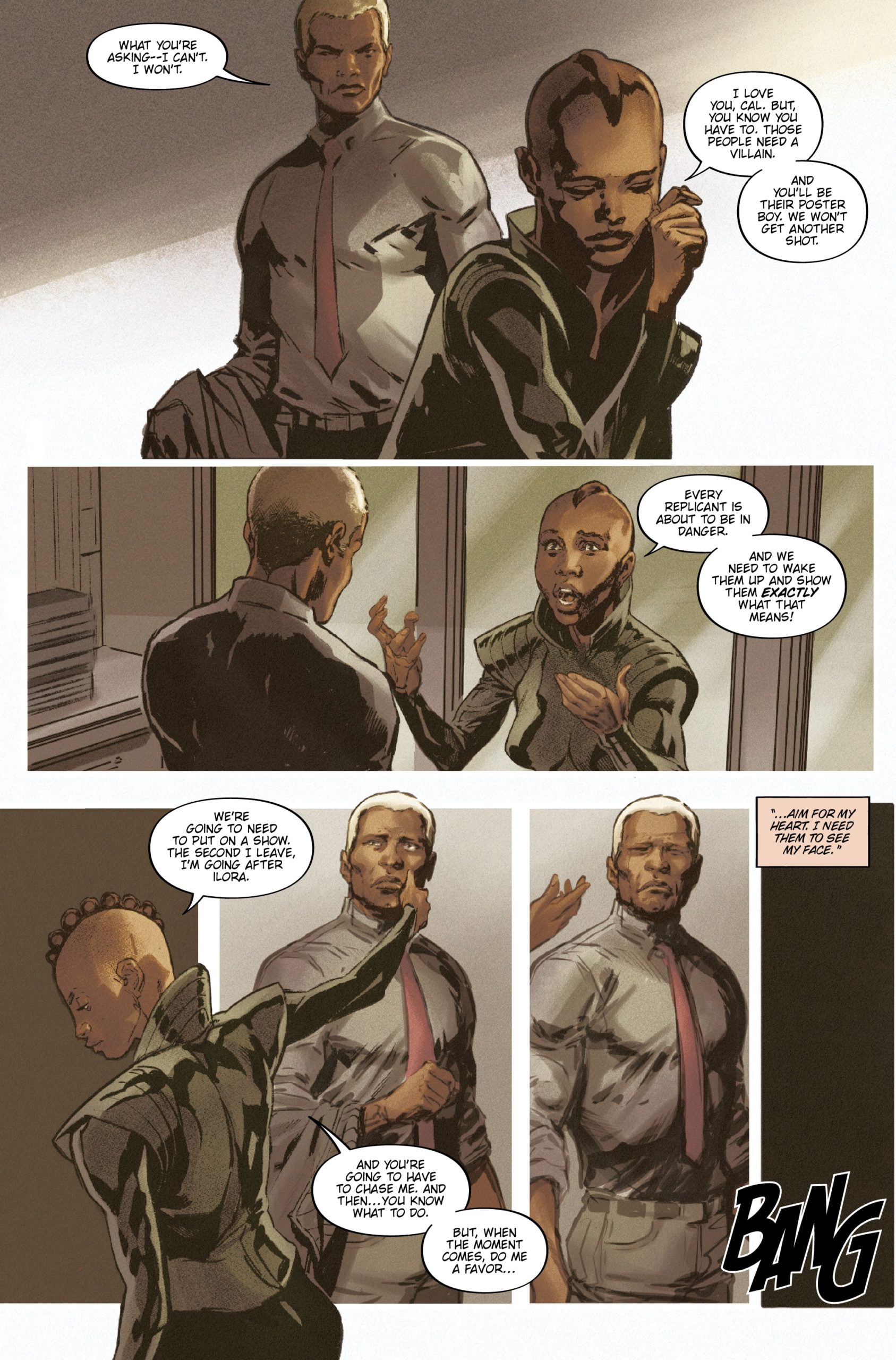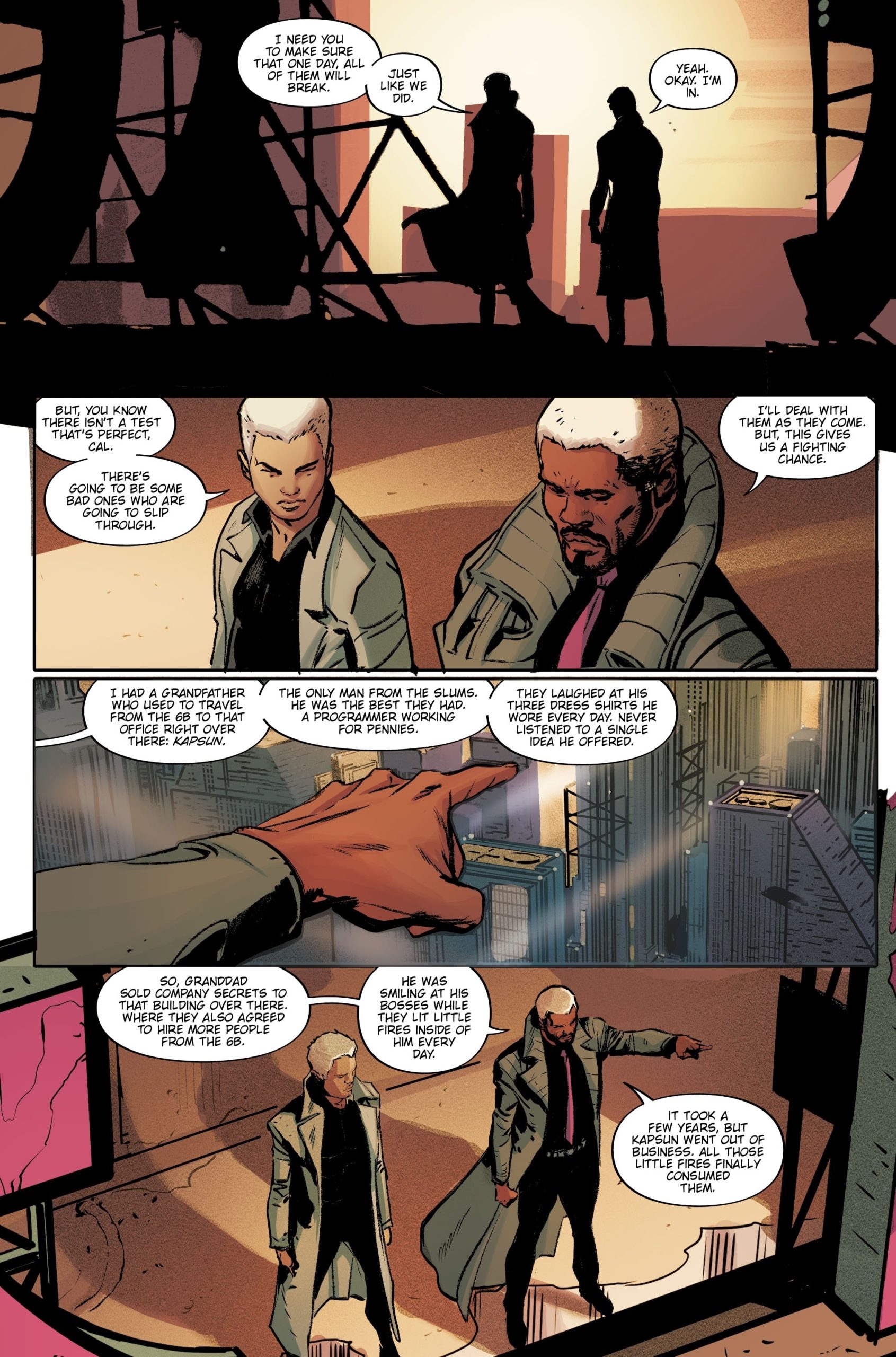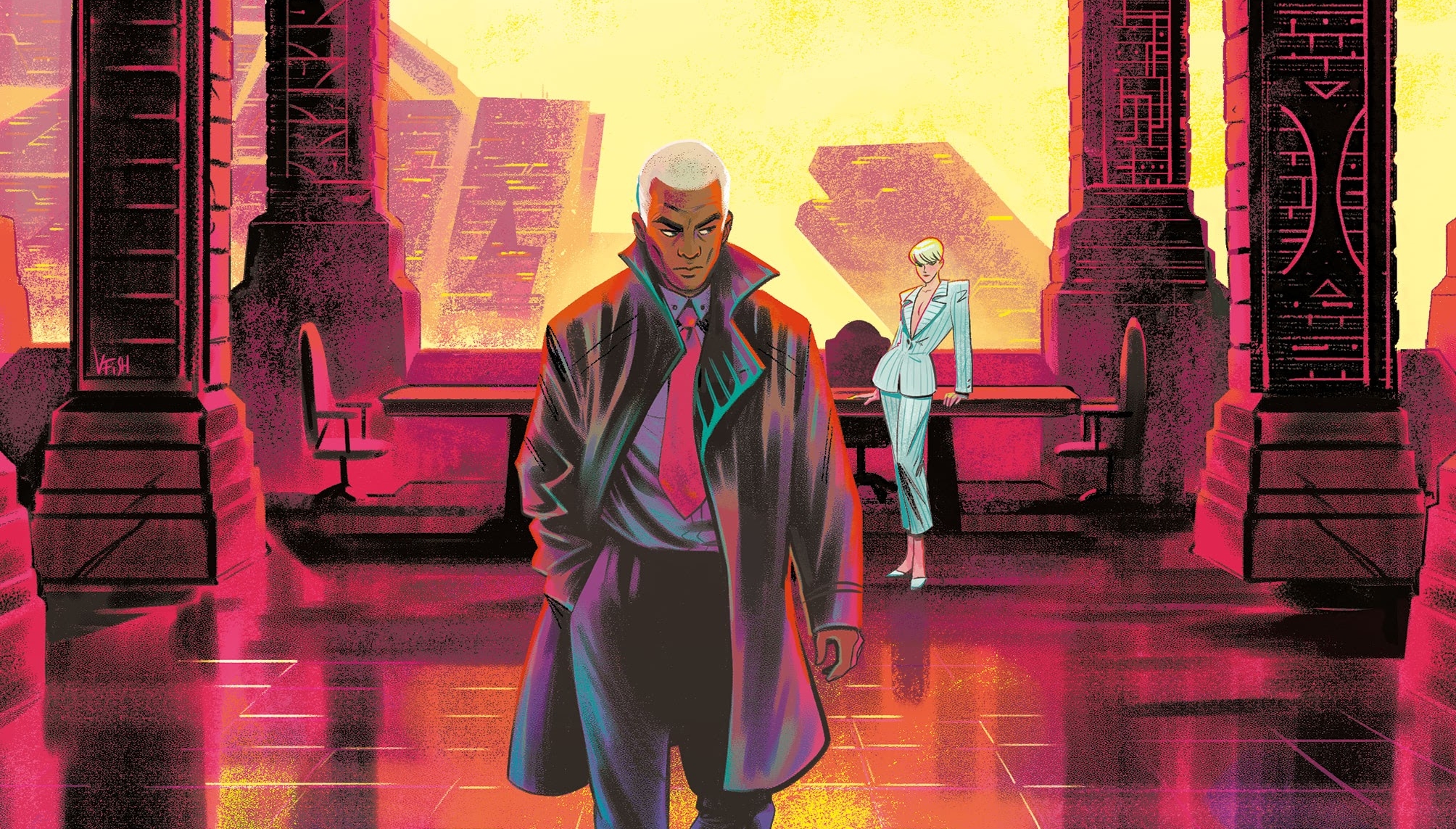Table of Contents Show
The Blade Runner: Origins series has given us some interesting thematic stuff to dig into and great characters. Now with Blade Runner: Origins #11 and #12 it seeks to end the prequel out in a way that wraps up its own original stuff as well as tying it more closely to the larger franchise. Does it succeed in this attempt? That is a mixed bag.
Blade Runner: Origins #11
As the penultimate issue, Blade Runner: Origins #11 concretely wrap up the main plotline with Stahl, Nia, Cal, etc. in a nice climax so that the final issue can be a denouement. Rare pacing to see in this day and age. Many times people conflate ending with a climax, so it’s nice to see a series to understand that is not the case. However, this means this issue is packed to the brim with action.
The action is well done, as always Fernando Dagnino delivers gorgeous page after gorgeous page. There is one page, in particular, that is full of multi-images of the characters going down several layers of the building taking out enemies as they go. The pacing of the action is high, and Dagino manages to convey the plan to the chaos with his layouts, it is superb. Of course, this comes with a caveat. I mentioned before that in one of the previous action-heavy issues that there was an almost grindhouse B movie feel to the action.

It was removed from the action of the movies which attempt to show the dehumanization of violence. And that continues here in Blade Runner: Origins #11, the Replicants especially do superhero-esque feats of strength and acrobatics that just seem very wild compared to the way this franchise normally treats action. Nothing wrong with it inherently, but it does end up being distracting.
The most interesting thing this issue does continues with this series’ attempt to look at complex themes in a way that is both fascinating and heart-breaking. Cal has to kill his sister Nia, who is now a Replicant. Nia has made a public attack and attends to be killed in order to create a martyr for her cause. And her brother is the one that must pull the trigger. She directly states that people in power need a villain and those that are not, need hope. This is an interesting way to take the story but we only really have one issue to unpack this and in its need to tie into the greater franchise, it limits its potential with this twist.
Blade Runner: Origins #12
So Cal killed his Replicant sister Nia in the last issue, and in Blade Runner: Origins #12 he becomes the first official Blade Runner, cops sent to kill Replicants as seen in the book, comics, and movies of the larger franchise. This would be all fine and dandy but there are two major problems with this. The first problem has to do with this being the conclusion of the Blade Runner: Origins comic series.
Time has passed since the attack and Cal is disturbed by what he had to do. All the major characters of the series get a least one or two pages to say goodbye, but we the reader don’t get to sit in this goodbye. We don’t get to see Cal process this fully, we don’t get to see him struggle to be the first official Blade Runner, we just transition from one goodbye to another in traditional denouement style. This is annoying because the first issue of the series drove home the inner conflict of Cal and yet by the end of the series he has even more conflict to struggle with internally, but that takes a backseat to tying up other threads and tipping a hat to the franchise. Quite a shame.

The other problem is Cal and Asa’s big plan revolving around the Blade Runner Units. Turns out that Deckard and Ash or any other Replicant ally of Blade Runner realized the amorality of their job and turned off their own free will, no they were chosen by a test to ensure most Blade Runners were good people. There is a throwaway line to say that the test won’t be perfect and there will be bad people on the job, but the implication remains. Deckard’s personal journey in the original film was all part of a planned internal rebellion from the very first Blade Runner. This inadvertently robs the future stories of this franchise that this is a prequel story to of all their bite.
With all this said, I still enjoyed these issues for the most part; Blade Runner #12 is appreciated for being a dénouement when many series condense that down into the climax of their stories especially recently. The characters of this series have been spectacular and I enjoy the thematic stuff of connecting Trans issues to the Replicant plight as well as Drag as a form of rebellion. But this all works much better if we take it in isolation rather than as part of the Blade Runner franchise as a whole.
Blade Runner #11 and #12 Bring A Conclusion That Partially Satifyies
Blade Runner: Origins #11 and #12 have some great moments and great ideas. K. Perkins, Mellow Brown, and Fernando Dagnino have delivered a wonderful look at Blade Runner from a POC and LGBT+ perspective with biting commentary and relevant themes. However, it buckles under the pressure of being part of a larger franchise and being a prequel. It is still worth the journey though.

